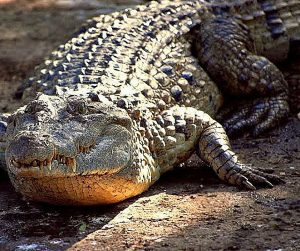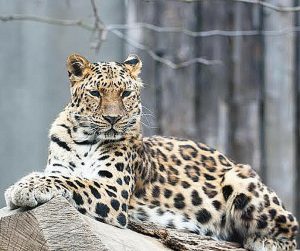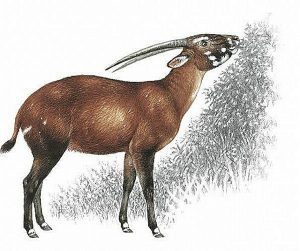Rarest Animals in the World: With an estimated 10-14 million species on the globe, there are bound to be some unusual animals you’ve never heard of. Rarest creatures are typically the most endangered, with a slim probability of extinction.
For millennia, humans have injured, depleted, and destroyed ecosystems all across the world, and habitat degradation continues to accelerate. Habitat loss is one of several key contributors to the ongoing extinction of species all over the world, including poaching and climate change. In this article, we’ll look at the ten rarest animals on the planet that still survive in the wild. All of the world’s rarest animals are severely endangered and urgently require conservation, or they would perish forever.
Recommended: Most Beautiful Animals in the World 2024
Top 14 Rarest Animals on Earth 2024
1. Kakapo: The nocturnal, flightless kakapo (Strigops halophila) is a New Zealand native with a 60-year lifetime. Human colonization of the island nation and the introduction of cats to the region wreaked havoc on the Kakapos.

In its natural range, the parrot is thought to be extinct. The species’ population has been steadily rising thanks to a government-sponsored conservation and relocation program. There are presently 116 mature adults dispersed across New Zealand’s three smaller islands.
Conservationists tag and track all adults in the area, which is virtually totally protected. Testing and additional feeding of breeding-age adults resulted in significant increases in the rate of birth and overall survival.
2. Philippine Crocodile: The Philippine crocodile is one of just two crocodile species found in the Philippines, and it is so rare that conservation measures are being made to conserve it. The crocodiles of the Philippines (Crocodylus mindorensis) are not faring as well as the kakapo.

The species is extensively dispersed in the inland wetlands of the Philippine Islands, with an estimated declining mature adult population of 92-137 members. The largest specimen collected in the wild was under nine feet long, making this crocodile smaller than its cousins. Fish, pigs, dogs, and waterfowl are their principal food sources as adults.
Also see: Cutest Animals in the World 2024
3. Amur Leopard: One of the world’s most endangered cats is the Amur leopard. Around 2007, it was estimated that there would be 19 to 26 rogue loops in southern Russia and northeastern China. In the Amur region of Russia and China, the Amur leopard (Panthera pardus Orientalis) exists. Its population has grown from around 14 mature adults in 2005 to about 84 mature adults presently, thanks almost exclusively to its speckled fur.

The creation of a reserve within the Russian Far East region has aided the species’ notable recovery, but a scarcity of prey will prevent them from returning to their former range. This remarkable leopard weighs 75-100 pounds, can speed at 37 mph, leap 20 feet lengthwise, and jump 10 feet directly straight up in the air.
4. Addax: The addax (Addax nasomaculatus) is a type of antelope that is used to roam the African deserts. They are currently exclusively found in the Niger region of Termit Tin Touma.
Thousands of addax reside in captivity in various preserves around the world, but the wild population is believed to be around 30-90 mature adults. Unrestricted hunting had a significant impact on the addax population, and increased oil drilling in their native habitats, as well as political instability, have attracted even more armed humans to the area.
Recommended: Countries with the Most Handsome Men in the world
5. Saola: The saola (Pseudoryx nghetinhensis) is a deer-like creature that is related to cattle. Due to their scarcity and secrecy, they are frequently referred to as Asian unicorns. The saola was just discovered in 1992 in the evergreen woods of Vietnam, and due to the dense forests of Vietnam and the political situation of Laos, no study to estimate their population size has ever been successful.

Habitat destruction and constant killing to meet local demand for bushmeat and medicinal supplies are two threats to the saola. Researchers believe there are no healthy herds left since the saola is rarely captured on trap cameras. There is no saola in captivity, and wild estimates range from 25 to 750 mature adults.
6. Gobi Bear: The Gobi bear (Ursus arctos gobies) is a brown bear subspecies found solely in Mongolia’s Gobi desert. There are less than 40 full adult Gobi bears left in the wild, and none are kept in captivity. This bear is a tough and persistent scavenger who survives in a location with an annual rainfall of fewer than four inches.

Habitat destruction caused by local mining and unregulated grazing by other animals ravaged Mongolian grasslands in the past, having a substantial influence on all species that live there. Furthermore, a 14-year drought that saw fewer than two inches of rain fall every year significantly decreased the Gobi bear’s food supply. The final three habitats of the bears have been designated as one big national preserve, and researchers have tagged 20 adults to monitor the species.
Recommended: Strongest Animals in the world 2024
7. Sumatran Rhinoceros: The Sumatran rhinoceros will be the next animal on our list of listrarest creatures, which is one of the world’s most threatened species of big mammals, with only a few remnant populations in Indonesia. Illegal hunting and loss of habitat have decreased their number by almost 80% over the last thirty years, with barely 30 mature adults remaining in sustainable communities.

The Sumatran rhino’s population groups are so dispersed that bringing many of them together is impossible. Small groups of two to five rhinos are unlikely to be rescued, even with conservation efforts, and the biggest reported group only contains 15 mature rhinoceroses.
8. Red Wolf: The red wolf (Canis rufus) is not just the sole North American species on our list of the world’s rarest animals, but it is also one of the most endangered. This species had gone extinct in the wild by 1980, but the US government returned it to Eastern North Carolina in 1987. The reintroduction was so effective that more than 150 animals settled in the area. Concerns about cross-breeding with coyotes and conflict with local landowners arose as a result of the rapid expansion.

Because of the tensions, the federal government limited the program to federal lands and preserves in the state’s easternmost reaches. This area can only support a pack of mature adults with a population of 30 people. The estimated population is assumed to be below that figure and falling at the current moment.
Recommended: Here are the Most dangerous means of transportation
9. Javan Rhinoceros: Rhinoceros sondaicus is the Javan rhinoceros. Only one species of rhinoceros in Indonesia exists. Java’s nature preserves There are no more herds. because the animal has vanished across its entire range. The preserve is home to the region, and the maximum number of animals it can accommodate is 68.

It is projected that the current mature adult population is only 18% of species that can reproduce. Poaching for its horn for sales and traditional Asian medicine is the most serious threat to the Javan rhino. The presence of a palm known as langkap poses a distinct hazard to this species. This palm is an invasive plant that chokes out all other types of flora, including the rhinos’ preferred feed.
Also see: Countries with the best education system in the world
10. Vaquita: The vaquita is the smallest living cetacean species, and it’s on the verge of extinction. The vaquita is the world’s most endangered species (Phocoena sinus). This porpoise can only be found in the Gulf of California at Mexico’s far northern corner. Since 1997, when the population was 567, it has decreased to 18 now.
In a decade, the vaquita is likely to go extinct. In contrast to other porpoises, mature females give birth every two years on average, which is twice as long as other species. While additional dangers have been mentioned, the unregulated use of gill nets for commercial fishing has shown to be the single most lethal factor for vaquitas.
Recommended: Most Successful Football Clubs in the World
11. Pangolin: These are one of the rarest animals in the world, and they are also one of the most unique. They are covered in hard, overlapping scales made of keratin, the same material found in human hair and nails. Pangolins are the only mammals with this kind of protective covering, which helps them defend against predators.

Eight different pangolin species have been identified, with four of them being found in Asia and four in Africa. The loss of habitat, hunting for their meat and scales (which are considered delicacies in China and Vietnam), and illicit wildlife trafficking are the main causes of the eight species being categorized as threatened or endangered. With its distinguishing appearance and scales comprised of keratin—yes, the same keratin that people spend huge money for at the hair salon—it’s rather unfortunate that the pangolin holds the designation as the world’s most trafficked animal.
12. Seneca White Deer: Seneca white deer are a very uncommon herd of deer that are leucitic, which means they lack pigmentation in their bodies yet have brown eyes. The species, which only numbers approximately 300 in total, was given a protected area at the former Seneca Army Depot, where they are safe from predators and available for viewing by the general public.

Recommended: Countries with the most corrupt police departments
13. Northern Hairy-Nosed Wombat: It’s possible that you’ve seen a wombat at your local zoo, but it’s unlikely that you’ve ever seen this furry creature. This animal is designated as one of the rarest in the world. It was thought that this species, which is limited to a small region in Queensland, Australia, had gone extinct until a small population was discovered in 1967.

These cute creatures, which have extremely poor eyesight from birth, rely on their noses to find food in the dark. Currently, it is one of the most endangered species on earth, with only about 200 of them left in the world. Their survival is primarily threatened by the destruction and loss of their habitat, wild dog predation, and competition for food from invasive species like cattle and rabbits.
14. The Elephant Shrew: The Boni Giant Sengi, commonly known as the elephant shrew, is ingenious to the Boni Dodori forest in Kenya. The animal has a highly peculiar look, with a mouse-like body and a miniature anteater-like head. Sadly, because of deforestation, the shrew’s population has decreased quickly, and it probably won’t be long before it completely goes extinct.

Although certain populations, like those in the Gede Ruins National Monument, number as few as 20 individuals, there are still over 13,000 elephant shrews worldwide across 19 different subspecies.
Recommended: Most Beautiful Countries in the World 2024
Conclusion
All of these animals are so near to extinction that saving some of them may already be too late. The preservation of these species in the wild is a huge problem due to severely fragmented populations and a dwindling number of mature adults. In captivity, the bulk of these species has a small or non-existent population. For all of these reasons, it’s more vital than ever to understand the challenges that some of the world’s rarest species face, and what we might be able to do to help them.

Edeh Samuel Chukwuemeka, ACMC, is a lawyer and a certified mediator/conciliator in Nigeria. He is also a developer with knowledge in various programming languages. Samuel is determined to leverage his skills in technology, SEO, and legal practice to revolutionize the legal profession worldwide by creating web and mobile applications that simplify legal research. Sam is also passionate about educating and providing valuable information to people.
This is not interesting!!!
a lot of cool animals nice!!!!